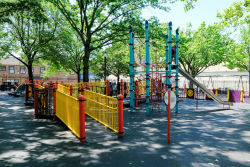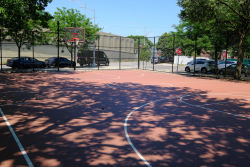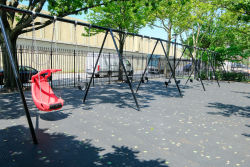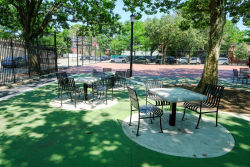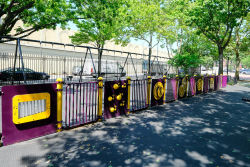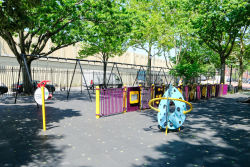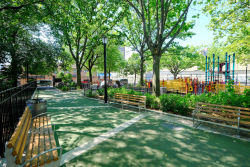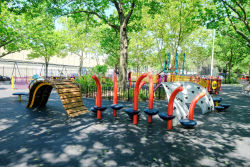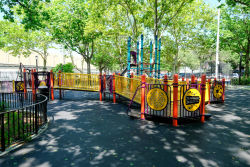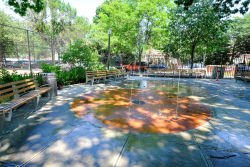Nathan Weidenbaum Playground
Nathan Weidenbaum Playground
What was here before?
After World War II, older housing in Woodside, which was laid out in 1869, was replaced by large apartment complexes. Most notably, the Big Six Towers were constructed on Queens Boulevard and 60th Street, as a cooperative housing development sponsored by the New York Typographical Union, Local Six. The site was undeveloped for several decades and used as a dumping ground for several decades until the 1970s.
How did this site become a playground?
In 1936, Mayor Fiorello H. La Guardia (1882-1947) designated the site as parkland. However, the plans to build a park at this site were postponed by the construction of the Brooklyn-Queens Expressway (BQE) to link the Gowanus Parkway and the Triborough Bridge. Construction on the expressway began with the Kosciuszko Bridge over Newtown Creek in 1939 and was completed in 1964 with the Queens section of the expressway, including the segment that runs through Woodside.
In 1971, Big Bush Park, located across Laurel Hill Boulevard, and this playground were built. The playground was renovated in 2001, which included refurbished basketball courts and sitting, and upgraded lighting, fencing, landscaping, and play equipment. The redesign also included camel spray showers and donkey animal art. The playground was reconstructed again in 2021 with a refurbished basketball court and a new spray shower and play equipment.
In 1987, Commissioner Stern renamed the site Little Six Park after the enormous neighboring apartment complex, Big Six Towers. However, the park was known locally as Little Bush Park, for its proximity to Big Bush Park, which was itself named after a discontinued street that once ran through both sites.
Who is this playground named for?
In 1986, the playground was renamed to honor longtime Woodside resident Nathan Weidenbaum (1908-1983). Weidenbaum was one of the first occupants of the Wynwoode Gardens Homes, where he moved in 1936. At the time, the area was lacking many basic amenities such as street signs and lampposts, so Weidenbaum formed the Wynwoode Gardens Homeowners Association to bring civic improvements to the area. He served as president of the association for over 45 years. He practiced law while also publishing a monthly newsletter on civic issues and services for homeowners. He also brought local bus service to the area. Weidenbaum retired in 1981 and died in 1983.
Check out your park's Vital Signs
Clean & Safe
Green & Resilient
Empowered & Engaged Users
Share your feedback or learn more about how this park is part of a
Vital Park System

